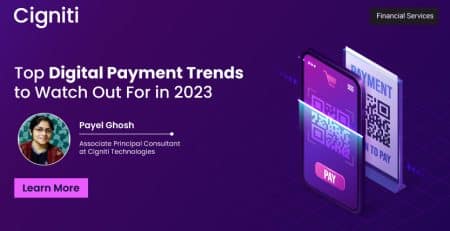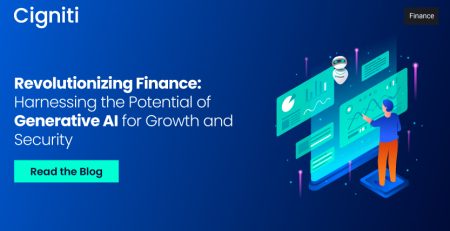5 Untapped Potential Areas of Open Banking
Once upon a time, in a world of traditional banking, a young entrepreneur named Richa had an innovative idea for a new financial service offering. However, she realized that her idea was only possible if she could access financial data from various banks in real time. Frustrated by the slow and cumbersome process of obtaining this data, Richa began to explore the potential of open banking.
With the help of open banking APIs, Richa was able to access customer financial data from various banks and combine it with her innovative technology to create a new financial service. Her service was a huge success, offering customers a personalized and seamless experience that was not possible with traditional banking.
Another entrepreneur called Maya had a brilliant concept for a new venture. She wanted to create a platform to help people find affordable and convenient fitness classes in their city. Maya knew there was a demand for this service, but she needed funding to get her idea off the ground.
Fortunately, Maya lived in a country that had recently implemented open banking regulations. Open Banking allowed third-party providers to access customers’ financial information with their consent, which meant that Maya could use this data to her advantage. She signed up for an open banking platform and began analyzing customers’ spending patterns. Using the data provided by the open banking platform, Maya was able to identify potential investors who were interested in health and wellness. She was also able to see which banks had a high number of customers who were interested in fitness classes. With this information, Maya was able to create a targeted marketing campaign that would reach the right people and increase her chances of getting funding. Maya’s hard work paid off, With the help of open banking, she was not only able to secure funding from a group of investors who were impressed with her business plan but also able to start her business and provide a valuable service to her customers.
As more entrepreneurs like Richa & Maya began to leverage the potential of open banking, the financial landscape began to change. Customers were no longer tied to a single bank for all their financial needs and were instead able to access a range of services and products from various providers.
Welcome to the world of Open Banking!
Open Banking refers to the practice of sharing financial data electronically and securely, using application programming interfaces (APIs). Open Banking is a relatively new concept that has been gaining traction in many parts of the world in recent years. While the growth rate of open banking may vary from country to country, there is no doubt that it is an important trend that is shaping the future of the financial industry.
Europe has been a leader in the adoption of open banking, with the introduction of the Payment Services Directive 2 (PSD2) in 2018. The PSD2 mandated banks to share customer data with third-party providers through open APIs, which has led to the development of innovative new services and products. According to a report by Accenture, the European open banking market is expected to reach €7.2 billion by 2024, growing at a CAGR of 46%.
North America has been slower to adopt open banking, but there has been increasing interest in this concept in recent years. The Canadian government has announced plans to introduce a regulatory framework for open banking, while the United States has seen a growing number of fintech startups that are using open banking APIs to provide innovative new services. According to a report by Accenture, the North American open banking market is expected to reach $7 billion by 2024, growing at a CAGR of 24%.
Asia-Pacific is also seeing growing interest in open banking, with countries like Australia and Singapore introducing open banking regulations. According to a report by Accenture, the Asia-Pacific open banking market is expected to reach $13.5 billion by 2024, growing at a CAGR of 30%.
India is a rapidly growing market for open banking, with several fintech startups and established financial institutions entering the market. While India is yet to introduce comprehensive open banking regulations, the Reserve Bank of India (RBI) has taken several steps to promote interoperability and facilitate the exchange of customer data between banks and fintech companies.
Open Banking has already transformed the financial industry by allowing customers to share their financial data with third-party providers, which has led to the development of innovative new services and products. However, there are still many untapped potential areas of open banking that could drive innovation and improve the customer experience.
Here is the list of 5 untapped potential areas of Open Banking.
Small Business Banking: One of the biggest untapped potential areas of open banking is small business banking. Open banking APIs can be used to provide small businesses with access to financial services and credit that were previously only available to larger businesses. This could help to fuel entrepreneurship and job creation, which could have a significant positive impact on the economy.
According to Mastercard’s Rise of Open Banking Small Business Report, 85% of small business owners are looking for more choices that deliver faster and easier access to capital. And, according to the Federal Reserve Bank’s Small Business Credit Survey, the share of small business applicants receiving all the traditional funding they sought fell from 51% in 2019 to 36% in 2020 to 30% in 2021.
Real-time Payments: Real-time payments are another untapped potential area of open banking. Open banking APIs can be used to facilitate real-time payments, which could be faster and more convenient than traditional payment methods. This could transform the payments industry and could bring benefits to industry and consumers alike. Enhanced financial inclusion, Cross-border payments, and Innovation in payment solutions are some areas to name where there is a huge potential to bring significant benefits.
According to a survey, the global real-time payments market is expected to grow at a compound annual growth rate (CAGR) of 30.6% between 2020 and 2025, reaching a market size of $55.9 billion by the end of the forecast period.
Digital Wallets: Open banking has the potential to significantly transform digital wallets by enabling them to offer more personalized and seamless payment experiences for users. By using open banking APIs to access real-time financial data from users’ bank accounts, digital wallets can offer a range of innovative features and services, including Personalized financial insights, seamless payment experiences, improved security, and integration with other financial services. It also could help to reduce fraud and improve security, which could have a positive impact on customer trust and loyalty.
Credit Scoring and Risk Assessment: By using open banking APIs to access transaction data, income and expenditure patterns, and other financial data, lenders and financial institutions can offer more accurate and personalized credit assessments and risk evaluations. Some potential benefits of using open banking for credit scoring and risk assessment include More accurate credit assessments, Improved risk management, increased financial inclusion, and Faster loan processing which could benefit both lenders and borrowers.
Insurance Services: By using open banking APIs to access transaction data, income and expenditure patterns, and other financial data, insurers can offer more personalized and tailored insurance services, as well as improve their underwriting and risk management processes. Some potential benefits of using open banking for insurance services include More accurate Risk assessment, Improved underwriting, personalized insurance offerings, streamlined claims processing, etc.
These are just a few examples of the many untapped potential areas like Real-estate, Health care, Digital identity, Investment Management, Merchant Services, etc. where we can expect to see many more innovative use cases of open banking emerge.
Conclusion
The untapped potential of open banking had been unlocked, and the financial landscape would never be the same again.
Cigniti has partnered with SaltEdge, one of the major Open Banking solutions companies which have two product offerings namely (i) Open Banking Gateway and (ii) PSD2/ Open Banking Compliance Solution. They are compatible and can be easily integrated with the major core banking software products from Finastra, Mambu, Temenos, Thought Machine, etc. Saltedge is an official partner for all these core banking software companies as well.
Need help? Consult our team of Open Banking experts to learn more about the untapped potential areas of Open Banking.





Leave a Reply